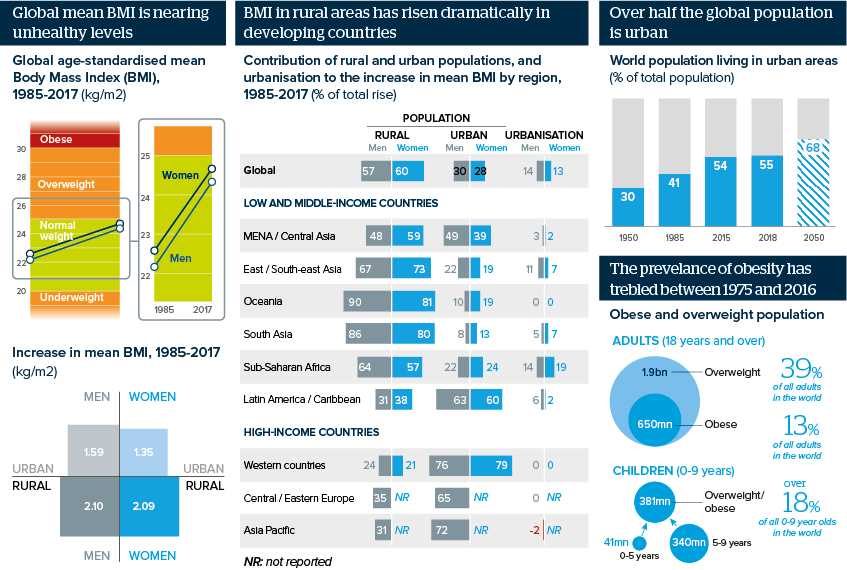Policy on ‘globesity’ epidemic must shed urban bias
Approaches to tackling the rise in overweight and obese populations have tended to ignore alarming rural trends
Source: UN; WHO; NCD Risk Factor Collaboration, Nature, May 2019
Outlook
An extensive new study on the global epidemic of overweight and obesity -- or ‘globesity’ -- since 1985 reveals two alarming trends: first, rural populations of low and middle-income countries (LMICs) have made unhealthy transitions as fast or faster than cities ; and second, rural areas have contributed to the rising epidemic more than the impact of urbanisation.
Such risky ‘urbanisation of rural life’ requires a broadening of existing policy approaches, especially extending the obesity healthcare provision to rural areas, ensuring rural supply chains deliver affordable healthy food, and planning rural development to facilitate healthier lifestyles.
Remedial efforts will face major impediments in LMICs: their health budgets are constrained, and population is rising fast and suffers both undernutrition and obesity.
Impacts
- Calls will rise for integrating hunger and obesity aid efforts to focus on supplying healthy food to the rural and urban poor.
- The economic costs of globesity will continue to rise, instilling a sense of urgency in policy solutions.
- Without public partnerships with private food companies, making supply chains more efficient, affordable and healthier will be difficult.
- Heavily urbanised Latin America will continue to make an unusually large urban contribution to globesity.
See also
- US weight-loss drug market will expand amid obstacles - Feb 21, 2024
- Government is yet to stem rise in obesity among Turks - Jun 11, 2020
- World hunger is likely to rise as 2030 UN target nears - Aug 27, 2019
- Boosting local agency improves health aid outcomes - Jul 22, 2019
- Obesity and hunger present dual challenges in Mexico - Oct 17, 2018
- Wealth creates new food-security challenges for China - May 8, 2018
- More graphic analysis
